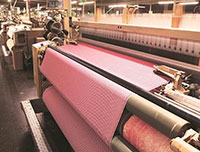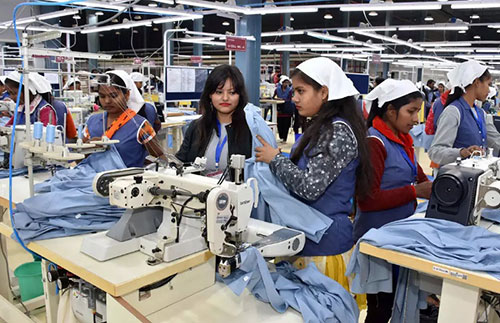"With low growth in synthetics, Indian apparel industry stands to be less competitive. The synthetic segment in India failed to make a mark in the global market because of low exports, low wages in factories producing synthetics and low investments in the sector. Indian textile units run for only six months in a year to produce cotton apparels. In the remaining six months, these units are either shut or run at a low capacity as they do not have orders for synthetics/ winter wear."
 With low growth in synthetics, Indian apparel industry stands to be less competitive. The synthetic segment in India failed to make a mark in the global market because of low exports, low wages in factories producing synthetics and low investments in the sector. Indian textile units run for only six months in a year to produce cotton apparels. In the remaining six months, these units are either shut or run at a low capacity as they do not have orders for synthetics/ winter wear.
With low growth in synthetics, Indian apparel industry stands to be less competitive. The synthetic segment in India failed to make a mark in the global market because of low exports, low wages in factories producing synthetics and low investments in the sector. Indian textile units run for only six months in a year to produce cotton apparels. In the remaining six months, these units are either shut or run at a low capacity as they do not have orders for synthetics/ winter wear.
Absence of synthetics impacts worker wages
Making winter wears is more expensive than making informal cotton wear, hence, workers making suits earn more money than workers making say a blouse. Thus, the absence of synthetics affects workers’ wages. Also, India has a few large firms that produce 90 per cent of synthetics raw materials consumed domestically. This compels local traders to import synthetics which are expensive due to high customs and anti-dumping duties on raw materials like PTA, PSF, PFY, acrylic fibers, etc. Though duty-free imports to exporters offer some relief, but the domestic synthetics ecosystem remains stunted.
more money than workers making say a blouse. Thus, the absence of synthetics affects workers’ wages. Also, India has a few large firms that produce 90 per cent of synthetics raw materials consumed domestically. This compels local traders to import synthetics which are expensive due to high customs and anti-dumping duties on raw materials like PTA, PSF, PFY, acrylic fibers, etc. Though duty-free imports to exporters offer some relief, but the domestic synthetics ecosystem remains stunted.
Lack of expertise and technology
Moreover most weaving and processing units lack expertise, scale and technology. Power outage and reduced capacity use doubles the cost of weaving in India, making it as expensive as in the EU or the US. Same is the case with processing units which engage in batch processing that often results in varying shrinkage, feel and shades. Most Indian processors also struggle to meet the zero-liquid discharge (ZLD) norms set by Madras high court in 2011.
Indian exporters are also ill-prepared to meet the demands of global fast-fashion leaders like Walmart, Zara, H&M, Gap, and online-only retailers like Amazon, Zalando. These leaders conjure new fashion trends and convert designs into affordable clothing within a few weeks. FFI leaders therefore, place orders with only those firms that deliver fast and are compliant with labor and other rules. In order to unshackle the sector and set it on a high growth plan, textile leaders need to adopt a three-fold strategy.
Strategies to push up synthetics sector
Firstly, lowering duty on synthetics raw materials is important as this will reduce their prices by 30 per cent to 50 per cent. This will encourage the apparel industry to invest more in synthetics.
Second, strengthening weaving and processing segments is prime. Indian manufacturers should set up at least 10 big scale weaving and processing units annually.
Thirdly, making factories FFI complaint. India has about 1,200 compliant factories supplying cotton products to FFI and other large buyers. Many of these would invest in synthetics and export new products to the same set of buyers.
These actions would make India a significant player in apparel trade and ensure a bright outlook for its future.












